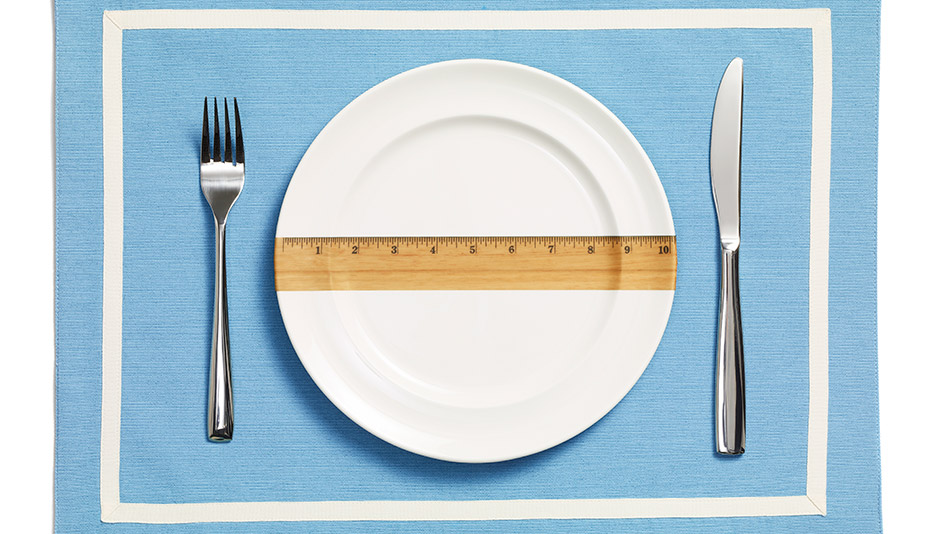The Bold New Program That Could Make Your City Healthier

Photo: Adam Voorhes
Wednesdays around noon are a bustling time on the sidewalks of Spencer, Iowa. That's when Deb Muller and six of her coworkers from Farmers Trust & Savings Bank lace up their cross-trainers for a weekly walk, covering as much ground as they can during their hour-long lunch break. Along the way, they pass other walking groups—there's a gang from Spencer Hospital and another from the local utility company. "We're outside, chatting away, not even realizing that we're getting exercise," says Muller, 58.
The walking clubs are just one part of a larger movement taking place in Spencer: a program known as the Blue Zones Project, whose ambitious goal is to create healthier American cities through grassroots community involvement and policy efforts. The initiative is the brainchild of journalist Dan Buettner, who has spent the past 12 years studying why, in certain pockets of the world—from Nicoya, Costa Rica, to Okinawa, Japan, to Sardinia, Italy—people live well into old age with stunningly low rates of disease. Buettner discovered that residents of these Blue Zones, as researchers called them, shared some important similarities: They didn't smoke or eat much meat, they walked constantly and they maintained robust social lives.
"After I came back to the United States, I wondered what could be done here to nudge people in a healthier direction," says Buettner. "I realized that you can't rely on individuals to do it alone. You have to change their whole environment." His objective: Create Blue Zones across the United States—cities where at least 20 percent of residents; 25 percent of grocery stores, locally owned restaurants and public schools; and 50 percent of the top 20 employers would adhere to his healthy-living plan.
The pilot program began in 2009 in Minnesota. Buettner's team handpicked the town of Albert Lea, with its manageable population of around 18,000. Local officials, dozens of businesses and more than 3,000 residents eventually signed on. Grocery stores replaced candy in checkout aisles with fruit, restaurants added healthier options to menus and employers began catering more nutritious meals. The results in Albert Lea were impressive: In less than a year, participants added an estimated 2.9 years to their life-spans (according to life expectancy data calculated by the University of Minnesota School of Public Health), and after one year, healthcare costs dropped 40 percent.
Next, Buettner expanded his model to Hermosa Beach, Redondo Beach and Manhattan Beach, California. These cities, too, saw rapid changes: In three years, the obesity rate declined 14 percent, smoking dropped more than 30 percent and exercise and healthy eating habits increased roughly 10 percent. The Blue Zones plan appeared to work on a small scale; it remained to be seen how it would fare on a bigger stage. But that changed when Iowa stepped up to be the next test case in 2011, with Governor Terry Branstad issuing a challenge to all: Help Iowa become the healthiest state by 2016. Four cities—Cedar Falls, Mason City, Spencer and Waterloo—were the first selected. By 2013, 11 more were on board. To date, more than 160,000 Iowans have pledged to live their Blue Zone best.
The walking clubs are just one part of a larger movement taking place in Spencer: a program known as the Blue Zones Project, whose ambitious goal is to create healthier American cities through grassroots community involvement and policy efforts. The initiative is the brainchild of journalist Dan Buettner, who has spent the past 12 years studying why, in certain pockets of the world—from Nicoya, Costa Rica, to Okinawa, Japan, to Sardinia, Italy—people live well into old age with stunningly low rates of disease. Buettner discovered that residents of these Blue Zones, as researchers called them, shared some important similarities: They didn't smoke or eat much meat, they walked constantly and they maintained robust social lives.
"After I came back to the United States, I wondered what could be done here to nudge people in a healthier direction," says Buettner. "I realized that you can't rely on individuals to do it alone. You have to change their whole environment." His objective: Create Blue Zones across the United States—cities where at least 20 percent of residents; 25 percent of grocery stores, locally owned restaurants and public schools; and 50 percent of the top 20 employers would adhere to his healthy-living plan.
The pilot program began in 2009 in Minnesota. Buettner's team handpicked the town of Albert Lea, with its manageable population of around 18,000. Local officials, dozens of businesses and more than 3,000 residents eventually signed on. Grocery stores replaced candy in checkout aisles with fruit, restaurants added healthier options to menus and employers began catering more nutritious meals. The results in Albert Lea were impressive: In less than a year, participants added an estimated 2.9 years to their life-spans (according to life expectancy data calculated by the University of Minnesota School of Public Health), and after one year, healthcare costs dropped 40 percent.
Next, Buettner expanded his model to Hermosa Beach, Redondo Beach and Manhattan Beach, California. These cities, too, saw rapid changes: In three years, the obesity rate declined 14 percent, smoking dropped more than 30 percent and exercise and healthy eating habits increased roughly 10 percent. The Blue Zones plan appeared to work on a small scale; it remained to be seen how it would fare on a bigger stage. But that changed when Iowa stepped up to be the next test case in 2011, with Governor Terry Branstad issuing a challenge to all: Help Iowa become the healthiest state by 2016. Four cities—Cedar Falls, Mason City, Spencer and Waterloo—were the first selected. By 2013, 11 more were on board. To date, more than 160,000 Iowans have pledged to live their Blue Zone best.

Photo: Adam Voorhes
At the municipal level, city planners laid the groundwork for reconfiguring the towns' landscapes: Spencer allotted $200,000 for new sidewalks; Cedar Falls erected a pedestrian and bicycle bridge to connect a large residential area with an industrial district, providing people with a new way to commute to work; and Mason City developed a 15-year plan to create more bicycle and pedestrian trails. Blue Zone officials showed employers, schools, and restaurants how to become designated Blue Zone sites, and volunteers recruited residents to sign personal pledges. "We want to make the healthy choice the easy choice," Buettner says.
Indeed, the project's allure may lie in its easygoing approach. Instead of following restrictive eating rules or engaging in grueling workouts, participants are urged to make tiny changes that are more likely to encourage than overwhelm. "You don't have to become a health fanatic," says Robin Anderson, 56, president and CEO of the Mason City Area Chamber of Commerce, whose staff has swapped sit-down meetings for walking ones and nixed morning doughnuts. "It's not so hard if you start small."
Beth O'Donnell, 32, learned about the program through her employer. After taking the pledge, she began parking in the most remote spot in the company lot and opting to take the stairs instead of the elevator. While there are no repercussions if you fall off the wagon, she says the honor system has kept everyone on track: "We aren't competing with one another. We're helping each other be successful." As for Deb Muller, by following the pledge's "stop eating when you're 80 percent full" rule and committing to the weekly walks at work, she shed 35 pounds in a matter of months. "It helps to have everyone around you thinking and acting healthier," she says. "We're living life the way it's supposed to be lived."
The Blue Zones Project isn't just for adults. "Walking school buses" are one of its most popular initiatives. Led by volunteer teachers or parents, children who live near their public school can walk together, often picking up more students at stops along the way. Schools are also placing a greater emphasis on nutrition. At Waterloo's Orange Elementary School, the transformation has been inspiring. When students won a pizza party for having the highest participation in a community run last fall, principal Teri Trask was shocked by the kids' reaction. "I had students marching into my office telling me they wanted something healthy," she says. "That never happened before!"
Still, for all its successes, the program has faced its share of obstacles. Restaurants have been notoriously resistant, because tweaking menus can impact bottom lines, and chain franchises aren't set up to accommodate variations on the norm. "Iowa is a pork state," says Buettner. "People's palates aren't used to plant-based meals, especially when they're dining out. Restaurants are coming around, but it's taking longer here than it did in California."
Despite the challenges, Iowa seems well on its way to reaching its goal. In Cedar Falls, not only have residents collectively lost weight, but there has also been a nearly 4 percent drop in the number of people with high cholesterol and a 10 percent decline in the number of smokers. Most impressive: As of the latest tally, Iowa had gone from 16th-healthiest state in 2011 to tenth in 2013.
Buettner says he already has his eye on Texas and Hawaii. "We started in one tiny city, and now this project has touched the lives of more than five million people," he says. "It's clear that we're onto something, and we're not stopping."
Indeed, the project's allure may lie in its easygoing approach. Instead of following restrictive eating rules or engaging in grueling workouts, participants are urged to make tiny changes that are more likely to encourage than overwhelm. "You don't have to become a health fanatic," says Robin Anderson, 56, president and CEO of the Mason City Area Chamber of Commerce, whose staff has swapped sit-down meetings for walking ones and nixed morning doughnuts. "It's not so hard if you start small."
Beth O'Donnell, 32, learned about the program through her employer. After taking the pledge, she began parking in the most remote spot in the company lot and opting to take the stairs instead of the elevator. While there are no repercussions if you fall off the wagon, she says the honor system has kept everyone on track: "We aren't competing with one another. We're helping each other be successful." As for Deb Muller, by following the pledge's "stop eating when you're 80 percent full" rule and committing to the weekly walks at work, she shed 35 pounds in a matter of months. "It helps to have everyone around you thinking and acting healthier," she says. "We're living life the way it's supposed to be lived."
The Blue Zones Project isn't just for adults. "Walking school buses" are one of its most popular initiatives. Led by volunteer teachers or parents, children who live near their public school can walk together, often picking up more students at stops along the way. Schools are also placing a greater emphasis on nutrition. At Waterloo's Orange Elementary School, the transformation has been inspiring. When students won a pizza party for having the highest participation in a community run last fall, principal Teri Trask was shocked by the kids' reaction. "I had students marching into my office telling me they wanted something healthy," she says. "That never happened before!"
Still, for all its successes, the program has faced its share of obstacles. Restaurants have been notoriously resistant, because tweaking menus can impact bottom lines, and chain franchises aren't set up to accommodate variations on the norm. "Iowa is a pork state," says Buettner. "People's palates aren't used to plant-based meals, especially when they're dining out. Restaurants are coming around, but it's taking longer here than it did in California."
Despite the challenges, Iowa seems well on its way to reaching its goal. In Cedar Falls, not only have residents collectively lost weight, but there has also been a nearly 4 percent drop in the number of people with high cholesterol and a 10 percent decline in the number of smokers. Most impressive: As of the latest tally, Iowa had gone from 16th-healthiest state in 2011 to tenth in 2013.
Buettner says he already has his eye on Texas and Hawaii. "We started in one tiny city, and now this project has touched the lives of more than five million people," he says. "It's clear that we're onto something, and we're not stopping."

Photo: Adam Voorhes
Live Your Blue Zone Best
You can implement these easy healthy-living strategies anywhere.



